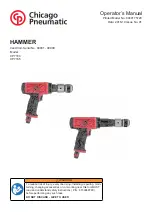
Page 3
For technical questions, please call 1-888-866-5797.
Item 58817
11.
Product service must be performed
only by qualified service
technician.
Service or maintenance
performed by unqualified personnel
could result in a risk of injury.
12.
When servicing the Service Kit,
use only identical replacement
parts.
Follow instructions in the
“Inspection, Maintenance, And
Cleaning”
section of this manual. Use
of unauthorized parts or failure to
follow maintenance instructions may
create a risk of personal injury.
13.
Always make sure the area of
use for this product is clear
of any children.
Do not allow
children to play with this product.
14.
Do not allow the vehicle’s engine
to run while using the Service Kit.
When running, the engine of a
vehicle produces carbon monoxide,
a colorless, odorless, toxic gas
that, when inhaled, can cause
serious personal injury or death.
15.
Prior to using this product, make
sure to read and understand
all instructions and safety
precautions as outlined in the
vehicle manufacturer’s manual.
16.
Always keep hands and fingers
away from the moving parts
and hot parts of an engine.
17.
Do not use this Service Kit
on diesel fuel systems.
18.
Do not smoke while performing
any fuel injection tests or repairs.
19.
Always have a dry chemical (Class B)
fire extinguisher within reach.
20.
Make sure to provide a suitable
container to catch released fuel
when the system is depressurized.
21.
Take extra care to prevent fuel
from contacting hot engine parts.
It is recommended that tests be
performed when the engine is cold.
22.
If a drop light is used, do
not allow fuel to contact the
hot surface of the bulb.
23.
Never remove any fittings
with the engine running.
24.
Never loosen any fittings or attempt
to remove hoses of vehicle or
Service Kit until you have relieved
the fuel system pressure.
Refer
to the vehicle manufacturer’s
service manual for specific fuel
pressure relief procedures.
25.
Always check all connections for
leaks during the testing procedure.
At any sign of leaks, turn off the
engine or disable the fuel pump.
Clean up any spilled fuel and repair
all leaks before resuming test.
26.
When preparing for pressure testing,
make sure the vehicle’s transmission
is placed in “PARK” or “NEUTRAL”
and the emergency brake is applied.
27.
When the test is complete,
depressurize the system and remove
the Service Kit.
Reassemble the
vehicle’s fuel line(s) to its original
condition. Start the engine and
check for leaks. If any leaks are
present, stop the engine, relieve
fuel pressure and repair all leaks.






























